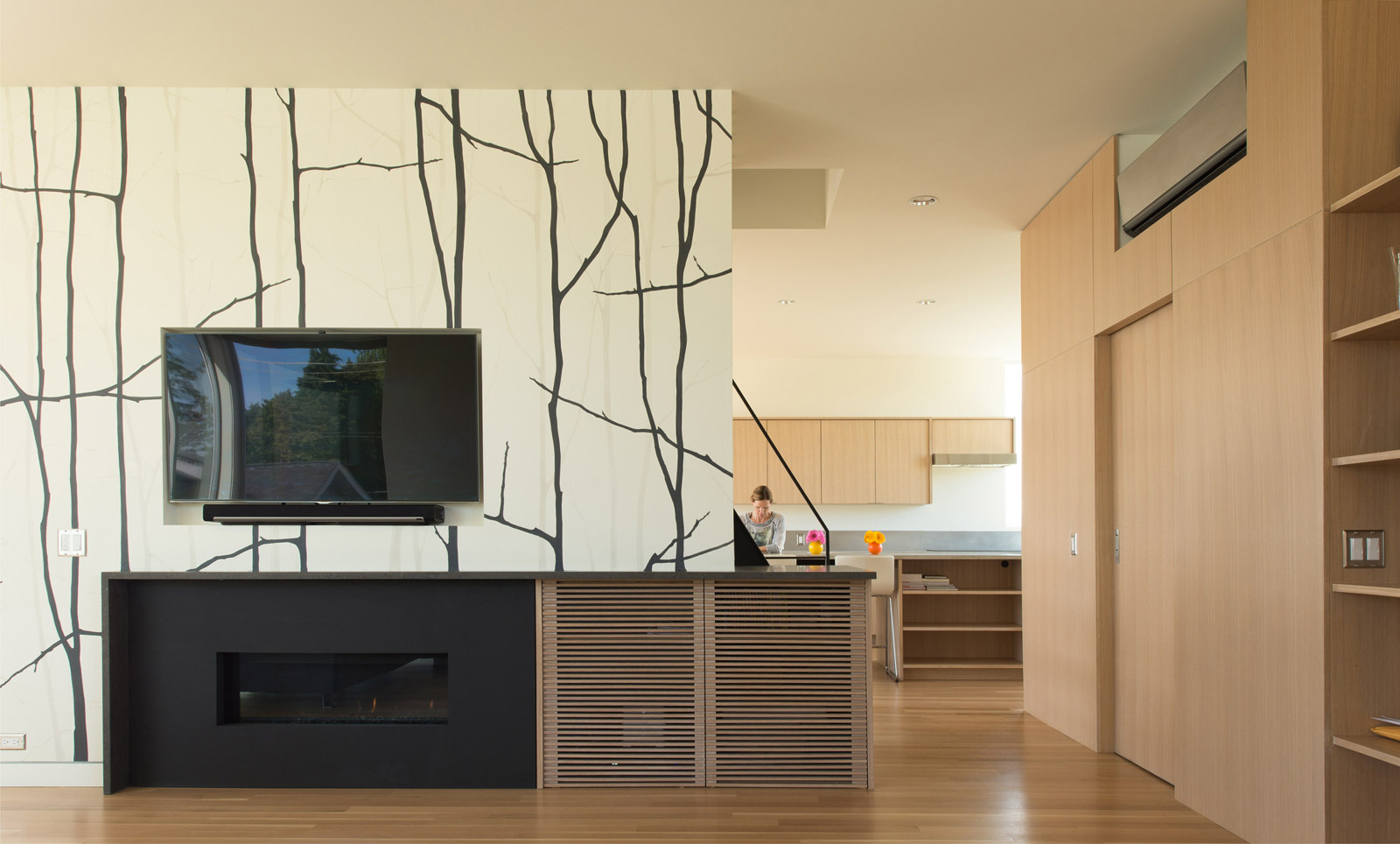
[Montigo firebox in the Case Study House 2014 / All photos by BUILD LLC]
Operating with a modern design philosophy is much more than an aesthetic preference. Above and beyond how design appears, it is a deeper value set which embraces technology, uses innovation to solve problems, and keeps the focus on the present. As a mindset which produces an architecture of current materials and methods, we’re inclined to call it design integrity.
But possessing a modern design philosophy doesn’t always mesh well with the realities of the world around us. When it comes to the manufacturing realm, we’re often surprised at the level of over-design or, worse yet, the added layer of design throwbacks so often found in architectural products. From our experience, it’s challenging to find lighting, plumbing fixtures, hardware, and appliances that seamlessly align with a modern design philosophy. Such design inconsistencies might be as simple as the fluted base of a bathroom faucet or an ornate handle on a kitchen appliance. As harmless as these examples may seem, these features don’t need to be there, they are entirely superfluous, and if inserted into modern architecture, they will stick out like a sore thumb.
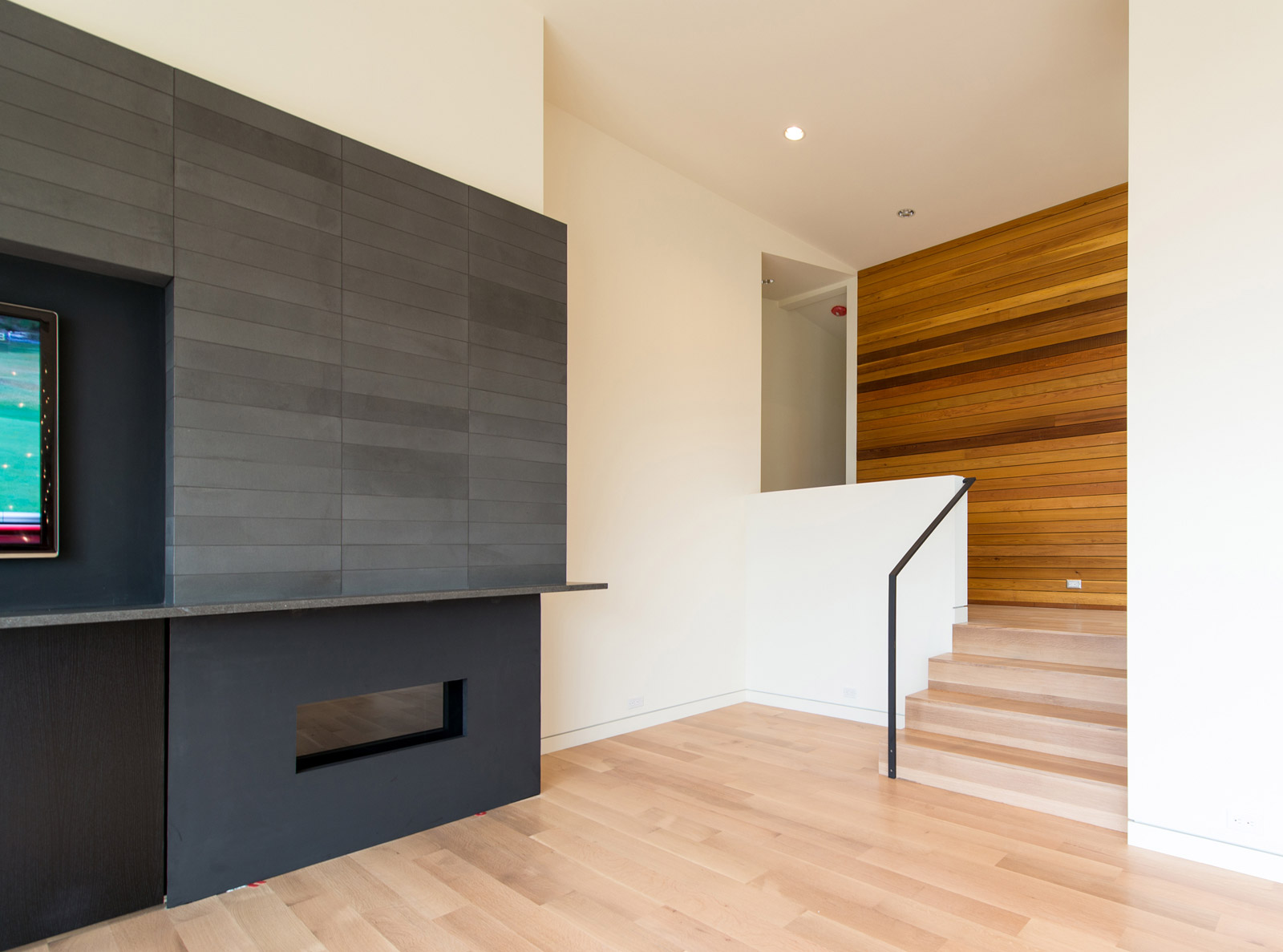
[Heat n Glo 6000 Modern firebox in the Innis Arden Residence]
Much to our dismay, manufactured architectural components are too often finished in a manner not congruent with a modern design philosophy. There are two primary ways to solve this particular challenge and arrive at a result that is consistent with a modern design aesthetic, and only one that is cost-effective. The household gas fireplace insert (we refer to them as fireboxes) provides an excellent example of this issue, and while this post focuses exclusively on the firebox, the concept applies to most architectural components.
The mechanics of a firebox are actually quite modern. They are design-forward, highly functional and unadorned (everything they need to be and nothing more). The difficulty arises with the added details of most fireboxes, as they are typically outfitted with embellished frames incorporating curves, stripes, or even unnecessary patterns. A modern design aesthetic would prescribe that the fire itself is the attraction, and not the showy design moves of the firebox frame — these distractions only detract from the beauty of the fire itself and often visually conflict with adjacent cabinetry. Call us control freaks, but it’s these details that create a harmonious modern environment.
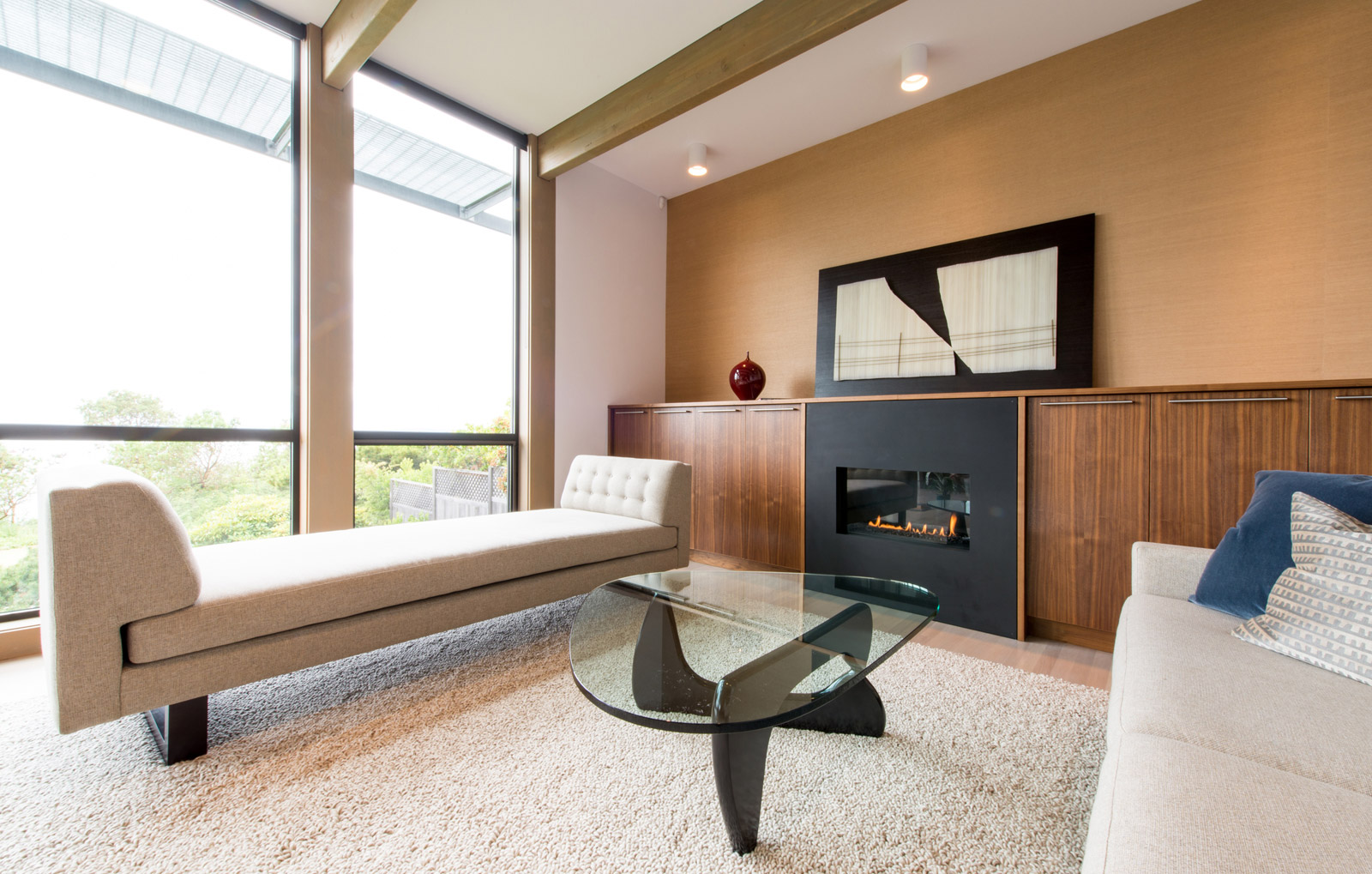
[Montigo H Series Firebox in the Magnolia Residence]
Option One is to design and build a custom firebox, which undoubtedly could result in a highly controlled end result. While many firebox manufacturers have the ability to coordinate a custom fireplace, this is the least cost-effective of solutions. Above and beyond the added expensive of designing and building a custom unit, a custom firebox insert needs to be UL tested to gain inspection approval from most building jurisdictions. This UL testing alone can easily exceed the cost of a prefabricated firebox.
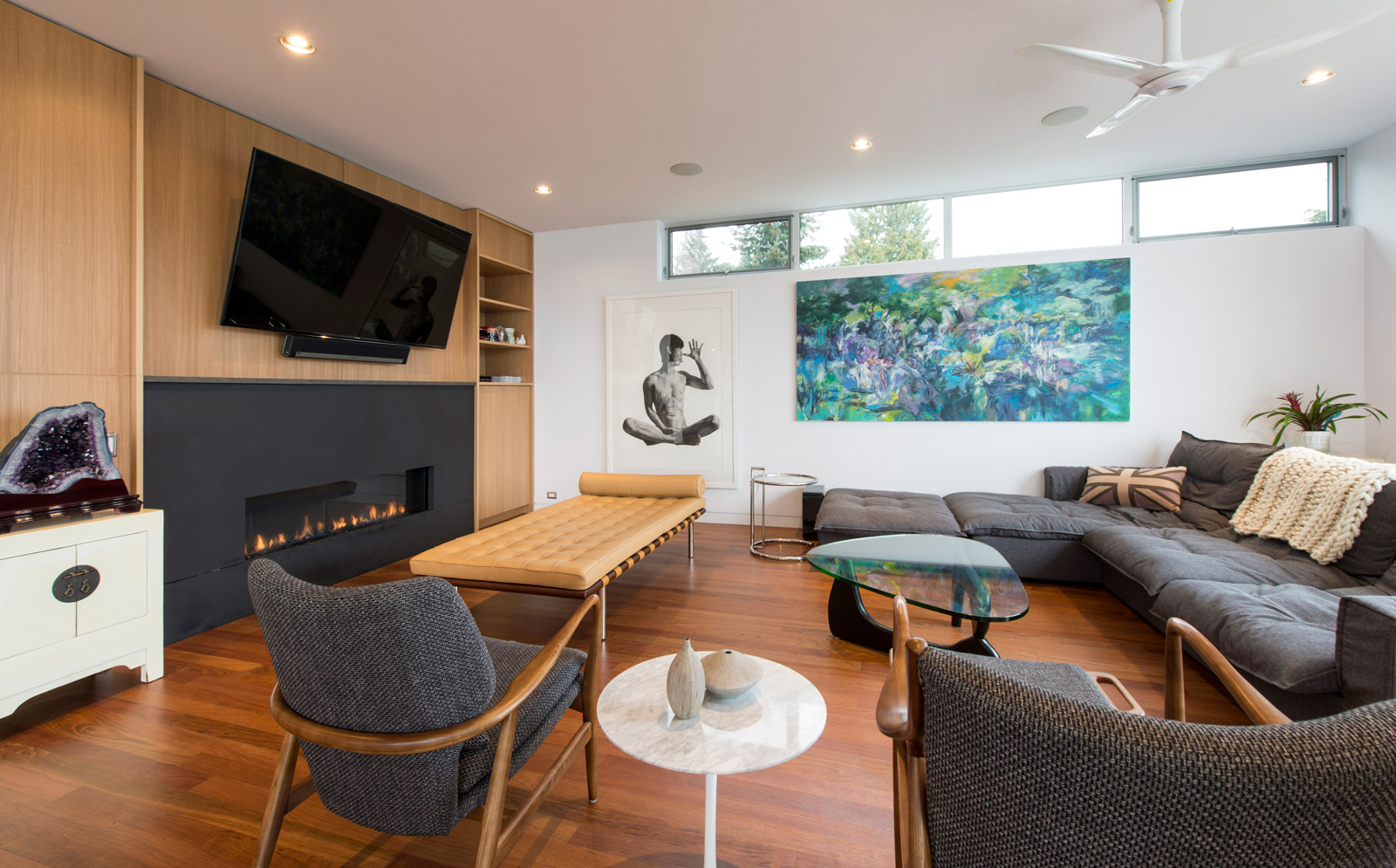
[Heat n Glo Red 60 Series firebox in the Lake Washington Residence]
This leads us to Option Two, our preferred option of taking a prefabricated firebox unit and customizing it. The solution is cost-effective and optimizes resources: it uses technology that already works well (the mechanics of the prefabricated firebox), already has a UL listing, is produced on an assembly line, and has been installed many times before. Starting with the raw firebox, we add a custom steel panel to the face of the unit to seamlessly integrate it with the modern lines of the surrounding architecture. Specifications on materials that can be added along with the minimum required clearances are typically included with most fireboxes, making the customization easily achievable for the modern-driven designer.
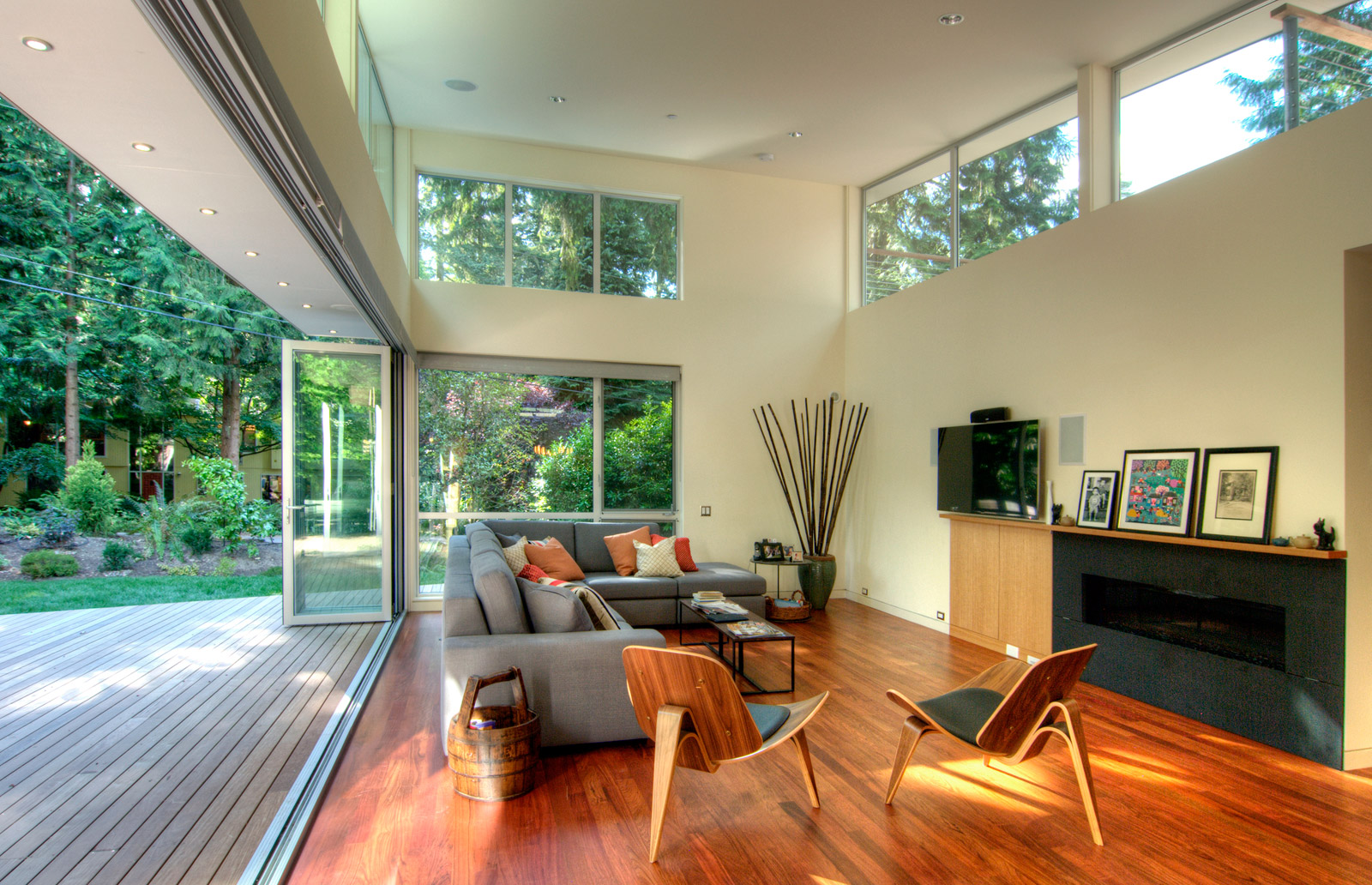
[Heat n Glo Red 60 firebox in the Beaux Arts Village Residence]
This design strategy illustrates the important difference between custom work (the fabrication of architectural items) and customized work (the altering of prefabricated products). Once the distinction is realized, the customized mindset can apply to a wide range of architectural components, with a little bit of research into the product’s specifications. Though seemingly small, these moves become key building blocks towards the successful implementation of good design everywhere.
Cheers from Team BUILD





